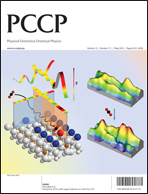The development and application of phosphorescent emitters in organic light-emitting diodes (OLEDs) have played a critical role in the push to commercialization of OLED-based display and lighting technologies. Here, we use density functional theory methods to study how modifying the ancillary ligand influences the electronic and photophysical properties of heteroleptic bis(4,6-difluorophenyl) pyridinato-N,C [dfppy] iridium(III) complexes. We examine three families of bidentate ancillary ligands based on acetylacetonate, picolinate, and pyridylpyrazolate. It is found that the frontier molecular orbitals of the heteroleptic complexes can be substantially modulated both as a function of the bidentate ligand family and of the substitution patterns within a family. As a consequence, considerable control over the first absorption and phosphorescence emission transitions, both of which are dominated by one-electron transitions between the HOMO and LUMO, is obtained. Tuning the nature of the ancillary ligand, therefore, can be used to readily modulate the photophysical properties of the emitters, providing a powerful tool in the design of the emitter architecture.

You have access to this article
 Please wait while we load your content...
Something went wrong. Try again?
Please wait while we load your content...
Something went wrong. Try again?


 Please wait while we load your content...
Please wait while we load your content...